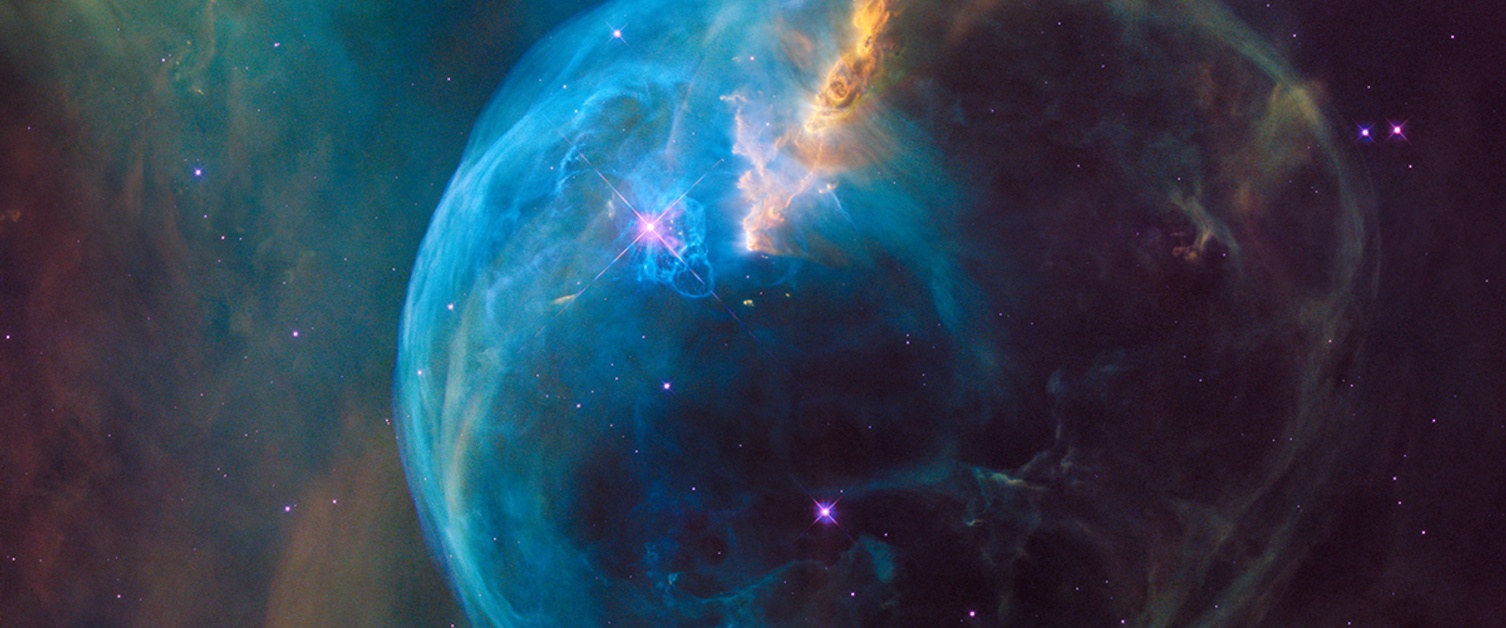Lightning in Space, Time Capsules, and Fighting Wildfires with Community Science: The Latest News
- By AMS Staff
- Oct 15, 2021
Here are a few of the news stories that we've been following in the last week. Do you have a story we missed? Share it in the community!
Superbolts extend extreme lightning impacts into space
A rare type of lightning has had scientists scratching their heads since the late 1970s. “Superbolts” are the most powerful lightning on Earth, with discharges so strong that they cannot be reproduced in the laboratory. The bolts also display geographic and seasonal attributes opposite that of regular lightning, adding to their mystery.
In a new 2021 study, Jean-François Ripoll, a senior scientist at the Commissariat à l’Energie Atomique (CEA) near Paris, France and colleagues confirmed the extreme power of superbolts by measuring their electromagnetic waves. This electromagnetic phenomenon, they found, is not just limited to Earth’s atmosphere; it extends all the way into space.
NASA's Lucy Team Invites You to Build Your Own Time Capsule
Where will you be and what will you be up to in August of 2027? What about March of 2033? NASA knows exactly where the Lucy spacecraft will be: flying by never-before-explored Trojan asteroids! After launching in October 2021, the Lucy spacecraft will journey for 12 years, observing one main belt asteroid and seven Trojan asteroids. These asteroids are billions of years old and the remnants of planet formation, serving as ancient time capsules from our early solar system. Trapped in their stable orbits, the Trojans form two “swarms” that lead in front of and trail behind the planet Jupiter in its path around the Sun.
To follow along with the Lucy mission on its 12-year journey, NASA invites you to build your very own #LucyTimeCapsule. Post a photo, drawing, video or other description of your Lucy Time Capsule on social media (Twitter, Facebook or Instagram) and use the hashtag #LucyTimeCapsule. If a post catches their eye, they may re-share it on their social media accounts.
Making GPS more resilient to space weather
Societies around the world now depend on satellite-based navigation systems, such as GPS, for a multitude of applications, including transportation, agriculture, military munitions, emergency services, and social networking, among others. However, natural hazards such as space weather can disrupt signals from these Global Navigation Satellite Systems (GNSS).
To better understand such disruptions, Sun et al. have developed a mathematical model that accurately emulates interruptions of GNSS signals caused by one particular space weather phenomenon: irregular low-density patches in the charged ion plasma that makes up Earth’s ionosphere.
Read more on how a better understanding of these disruptions could ultimately make GNSS satellites more resilient to space weather.
A digital twin of Galveston Island seeks to increase resilience to future storms
Xinyue Ye, Texas A&M University associate professor of urban planning, is heading a multidisciplinary team of scholars who are developing a comprehensive digital model of Galveston Island and portions of other Texas coastal communities in a National Science Foundation-funded study. This will help bring together local, state, and federal planning efforts for disaster response, recovery, and resilience.
The model is what’s known as a digital twin: a virtual representation of a physical object, service or process that can be updated with real time data. It’s a concept with applications in planning as well as manufacturing, product development and other fields.
By digitally modeling and testing resilience scenarios, planners, policymakers and citizens will be able to determine the best science-based measures for hazard resiliency design interventions, he said.
Read more on how they’ll create simulations of hazard events under different policy or hazard response scenarios.
Community science could help predict future wildfires
Research to develop ways to warn firefighters and the public about weather-generated hazards like fire tornadoes is underway at the University of Nevada, Reno and the Desert Research Institute. They are launching a new citizen science project called Ashfall Citizen Science. These crowd-sourced data will help improve the understanding of wildfire plumes by better documenting the size and shape of fire ash lofted into the sky.
“There have been decades of success in using radar and satellite observations to issue life-saving warnings for severe weather; for fire-generated tornadic vortices and explosive storm clouds these same tools show remarkable, yet incompletely realized, potential,” Neil Lareau, atmospheric scientist from UNR’s Physics Department and lead for the research, said in a statement. “To fully realize this potential, new physical and conceptual models are needed for interpreting radar and satellite observations of the wildfire environment.”
Read more on how researchers will use citizen scientists to help crowd-source data and check out the crowdsourcing process here.
Climate smart agriculture is gaining momentum in Congress
A major bill with bipartisan support in Congress promises billions of dollars for climate-smart agriculture practices. The Growing Climate Solutions Act would reward actions such as planting cover crops to reduce erosion and sequester carbon. The bill highlights farming’s potential as a climate change solution, as well as the challenge of controlling the sector’s growing greenhouse gas emissions. Follow the link for an analysis of the bill by Stanford Earth scientists Inês Azevedo, David Lobell, and Rob Jackson. They discuss the surprising amount of greenhouse gases emitted by farming, how farmland conservation programs can help reverse the trend, and what the federal government can do to promote more climate-friendly agriculture, among other issues.
